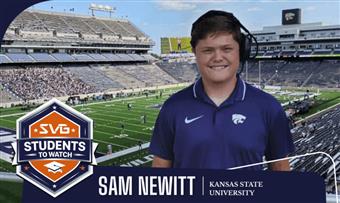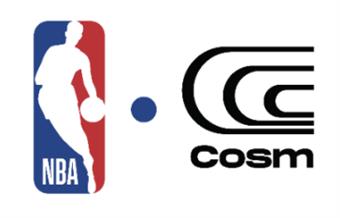 2025 Sports Broadcasting Hall of Fame: Jerry Jones, Visionary of ValueDave Barron, SVG Contributor
2025 Sports Broadcasting Hall of Fame: Jerry Jones, Visionary of ValueDave Barron, SVG Contributor Monday, November 10, 2025 - 2:30 pm
Print This Story | Subscribe
Story Highlights
Leading up to the 2025 Sports Broadcasting Hall of Fame ceremony on Dec. 16 at the New York Hilton, SVG is profiling the 10 inductees in this year's class. For more information, CLICK HERE.
In the amazing world of Dallas Cowboys owner Jerry Jones, one plus one can equal three.
It may sound like fuzzy math, but it's a state of mind that has enabled Jones to increase the Cowboys' value from $140 million when he bought the team in 1989 to an estimated $13 billion today.
Along the way, Jones helped enrich his fellow NFL owners, the league's advertisers, and its players to a degree that would have been unimaginable 36 years ago. He's the rising tide that has lifted all boats.
He has been the best thing that ever happened to the NFL, says former FOX Sports President David Hill. He had a vision, and he never accepts the status quo. He always wants to know why,' and he won't rest until he finds out.
The best line I've ever heard from him, Hill continues, is that there's nothing like catching a 20-lb. bass on a 1-lb. line. If you want an epitaph for Jerry Jones, that would be it.
Jones was born in Los Angeles but grew up in Arkansas, where his family was in the grocery business. After college, where he played on the University of Arkansas's undefeated football team in 1964, he owned restaurants and worked for a family-owned insurance company before amassing a fortune in oil and gas.
Jones in Dallas Cowboys Draft Room in 2019 (Photo: James D. Smith/Dallas Cowboys)of the Dallas Cowboys during the second day of the 2019 NFL Draft at The Star in Frisco, Texas. Photo by James D. Smith/Dallas Cowboys
As an investor in NBC affiliate KARK-TV Little Rock, he got an early lesson in television's dance of risk and reward when a competing station purchased rerun rights to I Love Lucy, a 1950s sitcom considered one of television's most influential programs.
They were prohibitively expensive, Jones notes. There was no way our station could justify that expense. But the owner of the CBS station in Little Rock bought them. I asked him, How can you make money?' He said, Jerry, your family was in the grocery business. You do remember what a loss leader is, don't you?'
Jones did. Much like Walmart attracting customers with its famed price rollbacks, Jones's competitor was willing to overpay for I Love Lucy because it provided access to other programs, offered a strong lead-in to the station's nightly newscast, and kept viewers from changing the dial. That, in turn, boosted its audience and advertising revenue.
You might lose money on the fee you paid for I Love Lucy, Jones says, but you make it up elsewhere. It's a classic loss leader.
He remembered that lesson in the mid 1990s when the NFL's TV partners asked the league for a $300 million rate cut and a two-year contract extension. He and several younger NFL owners blocked the proposal, and NFL Commissioner Paul Tagliabue, who was in favor of the deal, named Jones to the league's TV committee, perhaps to test the Arkansas whippersnapper's negotiating skills.
From left: Jones with 1990s Dallas Cowboys stars Michael Irvin, Troy Aikman, and Emmitt Smith
Soon thereafter, Jones was contacted by FOX Broadcasting owner Rupert Murdoch, who told Jones that, in the late 1980s, he had been used by the league as a stalking horse to drive up prices.
As an outsider who had pushed all his chips to the center of the table to buy the Cowboys, Jones could relate to Murdoch's position. I said, Mr. Murdoch, I don't have the financial capacity not to give a top offer serious consideration. You bring that big offer in, and I promise you that I will stand on the table for it.'
Jones (left) and Cowboys coach Barry Switzer (right), with sportscaster Greg Gumbel, celebrate 1995 Super Bowl victory.
Murdoch did. FOX used the NFL to build a national network, and the NFL's broadcasting revenue rose from $900 million annually in 1990-93 to $1.1 billion in 1994.
As the league and its partners learned how to leverage pro football's value to viewers and customers, one plus one really did add up to three - and maybe more. With new deals that began in 2023, the NFL's annual broadcast and streaming revenue grew from $900 million to $12 billion, six times greater than the 30-year inflation rate.
Throughout his time in the NFL, Jerry recognized the value of NFL content as a sport but also entertainment, says NFL Commissioner Roger Goodell. He has been a driving force and helped position the NFL as the most valuable programming to our existing and new partners.
Jones with sportscaster Al Michaels
Jerry has always challenged everyone in the NFL to think big and bold, Goodell continues. This has helped shape our agreements with broadcast partners but also enabled us to look ahead to meet our fans where they are, with new platforms.
Murdoch's bold move helped Jones harness his own ability to generate revenue aside from league sources. The Cowboys name had credibility, and sponsors like Miller and Pepsi were willing to pay for it. One plus one equaled three.
If you have a resource, Jones says, it's up to you to price it with the proper appreciation of what it can do for the customer. It's called marketing. The alternative to that is called charity.
The Jones family with Cowboys Stadium model: (from left) Stephen, Jerry, Gene, Charlotte, and Jerry Jr.
While NFL Films for decades had helped give the league its own mythology, Jones learned he could drive interest in his product year-round. He was inspired in that regard by an early meeting with Dan Burke,































































